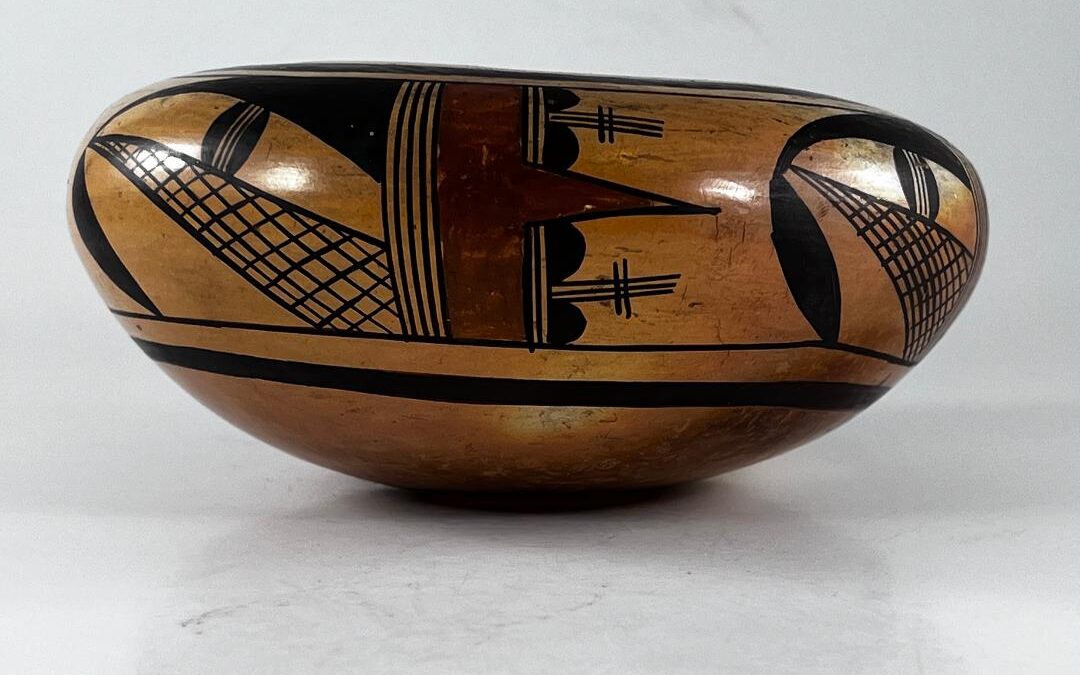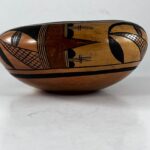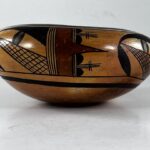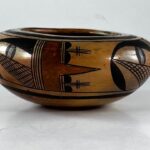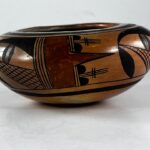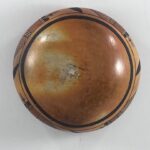Hopi-Tewa seed pot with “clown” design element, cloud and other standard design elements on the exterior; unsigned; 1930s (?). Like 2002-09: 1) this pot is not symmetrical and sits unevenly on its rounded bottom; and 2) the painting on the pot is fine and uses traditional Nampeyo family designs. The design is pleasing and shows real skill.
Purchase History:
Purchased on 5/10/00 on eBay from Four Wind Galleries, Pittsburgh. The piece came out of a private collection in Pittsburgh, PA

